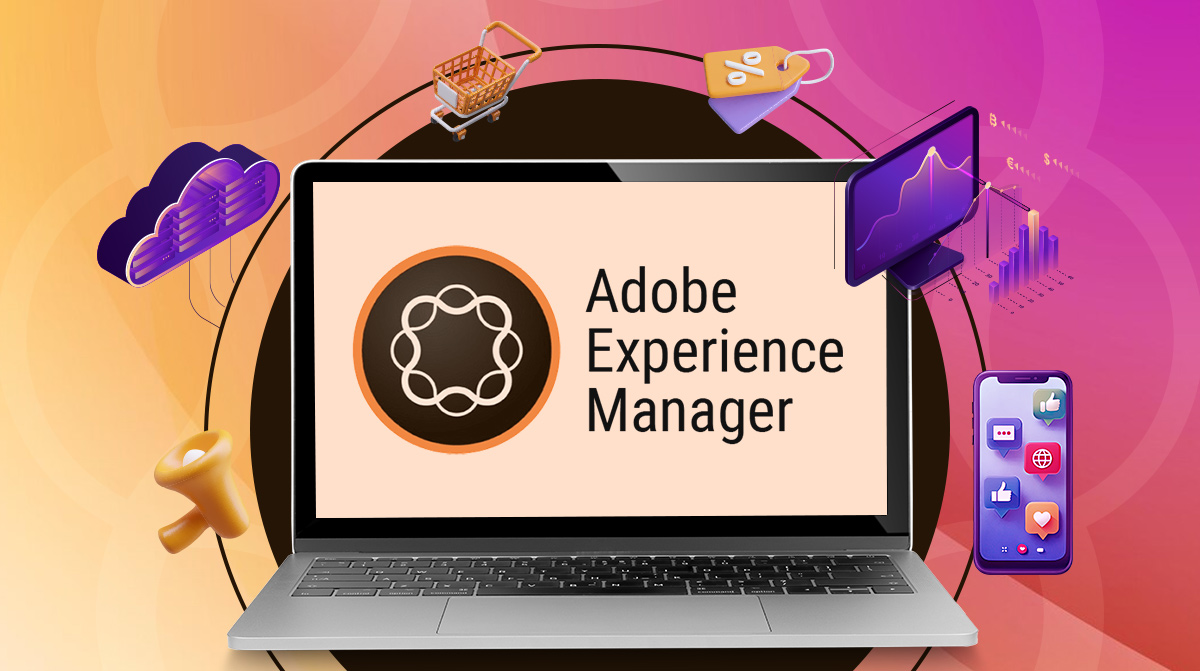Adobe Experience Manager Services (AEM) is poised for a significant evolution with the upcoming release of AEM 6.6, also known as AEM 6.5 2025 Edition. This new version will mark a pivotal shift, assumingly driven by the integration of Java 17. It aims to enhance performance, security, and long-term support for on-premise, self-hosted, and Adobe Managed Services (AMS) customers.
In this comprehensive overview, we will delve into the key aspects of AEM 6.6, the implications of transitioning to Java 17, and the essential steps organizations should undertake to prepare for this upgrade.
AEM and Java 17 – A Strategic Transition
AEM has traditionally been built on Java 8 and Java 11, but with evolving technology and the end-of-life announcements for older Java versions, Adobe is moving toward a more modern Java platform.
As part of this transition, Adobe plans to introduce Java 17 in AEM 6.6 (AEM 6.5 2025). This move will address security vulnerabilities that are no longer patched in Java 8 and Java 11 while also unlocking the performance improvements and advanced features of Java 17.
To ensure seamless integration, Adobe has undertaken extensive engineering efforts to update core components, including Apache Oak, Java Content Repository, and Sling. These enhancements optimize AEM 6.6 for Java 17, making it more robust and efficient.
By aligning AEM with Java 17, Adobe is ensuring long-term support, providing organizations with a secure, high-performance, and future-ready content management platform.
Performance Enhancements in AEM 6.6
- Significant performance improvements – Java 17 will boost overall AEM system performance.
- Enhanced garbage collection – ZGC and Shenandoah will enable efficient memory management.
- Reduced latency – Operations will become more responsive and faster.
- Optimized Just-In-Time (JIT) compiler – Faster code execution for improved efficiency.
- Smoother content delivery – Users will experience better system performance.
Security Enhancements with Java 17
- Stronger encryption standards – Data protection will improve significantly.
- Automatic memory management – Security vulnerabilities will be minimized.
- Compliance with GDPR and CCPA – AEM will align with global data privacy regulations.
- Enterprise-ready security – Ideal for businesses handling sensitive data.
Compatibility Considerations for Existing Installations
- Compatibility issues for older Java versions – Java 8 and Java 11 users may face challenges.
- Custom applications and legacy code testing – Thorough validation will be required.
- Adobe transition tools – Adobe will provide resources to ease the migration process.
- Careful migration planning – Enterprises must strategize to prevent service disruptions.
Development Benefits of Java 17
- Modern programming constructs – Developers will leverage enhanced switch expressions, pattern matching, and sealed classes.
- Improved code maintainability – Cleaner and more readable code will be easier to manage.
- Efficient development workflow – New features will streamline development.
- Cloud-native integration – Scalability and flexibility will enhance AEM’s cloud capabilities.

Deprecations in AEM 6.6 (AEM 6.5 2025 Edition)
With the release of AEM 6.6, Adobe is implementing key deprecations aimed at enhancing security, performance, and maintainability. These changes affect APIs, third-party libraries, and bundled features.
Major API and Library Deprecations
- Commons-Collections-3.x APIs – Marked as deprecated to mitigate security risks.
- Guava Library Removal – No longer included in the distribution, but can be manually added if required.
- Third-Party Library Updates – Various dependencies have been updated to their latest versions for improved stability and security.
Changes in AEM UberJar Packaging
The AEM UberJar structure is changing:
- A dedicated 6.5.2025 UberJar will be available.
- A separate deprecated UberJar must be included if legacy APIs are still in use.
Removed Packages in AEM 6.6
Several outdated features and integrations are being removed, including:
- Social (legacy CQ social bundles)
- Commerce
- Screens
- We.Retail
- Integration of Search & Promote
It’s important to note that only the older CQ Social bundles (e.g., com.adobe.cq.social.cq-social*) are being deprecated, while AEM Communities remain unaffected.
Organizations should assess their dependencies and make necessary adjustments to ensure a smooth transition.
Preparing for the Upgrade: A Strategic Approach

As organizations move toward AEM 6.6, a well-structured approach will be essential for a smooth and efficient upgrade. Future-proofing your AEM environment requires careful planning, compatibility assessments, and rigorous testing. Here’s how to navigate the transition effectively:
1. Strategic Assessment & Planning
- Evaluate Your Current Environment: Conduct a thorough audit of AEM instances, custom code, integrations, and third-party dependencies.
- Identify Compatibility Issues: Utilize Adobe’s Pattern Detector tool to assess potential challenges with Java 17 and AEM 6.6.
2. Preparing for the Upgrade
- Backup First: Secure a full backup of your AEM instance to prevent data loss.
- Set Up a Staging Environment: Mirror the production setup for controlled testing and validation.
- Update Dependencies: Ensure all third-party libraries and custom code align with Java 17 compatibility standards.
3. Executing the Upgrade
- In-Place Upgrade: If minimal changes are needed, replace the old AEM jar file with the new one and run upgrade commands.
- Side-By-Side Upgrade: Set up a parallel AEM 6.6 environment for significant customizations and migrate content and configurations.
4. Post-Upgrade Optimization
- Comprehensive Testing: Validate all functionalities to confirm a seamless transition.
- Performance Monitoring: Continuously track system performance and address any emerging issues.
- User Enablement: Provide training to ensure teams can leverage new features effectively.
As AEM evolves, staying ahead with a structured upgrade approach will maximize performance, security, and long-term stability. Organizations that proactively prepare will be well-positioned to harness the full potential of AEM 6.6.
Preparing for AEM 6.6: What the Upgrade Means for Existing 6.5 Sites

The transition from AEM 6.5 to AEM 6.6 (also referred to as AEM 6.5 2025 Edition) will follow a familiar upgrade path, similar to the move from AEM 6.4 to 6.5. Adobe will support two upgrade mechanisms:
- In-Place Upgrade – Directly update your existing AEM environment to the new version.
- Side-Grade Using oak-upgrade – Similar to the crx2oak process used for previous upgrades, this method migrates content to a fresh repository.
Steps for a Successful Upgrade
- Run the Updated Pattern Detector – Adobe will provide an upgraded tool to scan your current installation and identify potential compatibility issues.
- Address Compatibility Issues – Follow Pattern Detector recommendations to resolve flagged elements before proceeding.
- Execute the Upgrade: Based on your repository size, infrastructure, and business needs, you can choose between an in-place upgrade and a side grade.
- Recompile Code for Java 17 – Your AEM codebase must be recompiled on JDK 17, which may require adjustments to ensure full compatibility.
- QA & Go-Live – Conduct thorough testing before rolling out the upgrade to production.

AEM as a Cloud Service & Java 21 Transition
While on-premise AEM will shift to Java 17, AEM as a Cloud Service will soon move to JDK 21. Adobe is working to minimize disruptions, but organizations should anticipate a Q1 or early Q2 2025 timeline for updating development pipelines, Cloud Manager builds, and codebases to ensure compatibility.
By planning ahead, businesses can ensure a seamless upgrade to AEM 6.6 while preparing for future advancements in AEM Cloud Service.
Looking Ahead: The Future of AEM and Java
With AEM 6.6 and Java 17, Adobe is setting the stage for the next era of digital experience management. But this is just the start. The roadmap ahead points toward AI-driven content strategies, deeper cloud integration, and enhanced headless CMS capabilities.
- Smarter automation – AI-powered tools will refine content personalization and asset management.
- Optimized omnichannel marketing – AI will streamline marketing efforts across multiple platforms.
- Seamless Adobe Experience Cloud integration – Workflows will be more efficient and data-driven.
- Scalable, immersive experiences – Businesses will create more engaging digital experiences at scale.
For organizations adopting AEM 6.6 today, the advantages are clear: a future-ready platform built to evolve and redefine digital engagement in an innovation-driven landscape.
Final Thoughts
AEM 6.6 marks Adobe’s continued dedication to modernizing its platform while ensuring it will meet enterprises’ diverse needs. By preparing for these changes in advance, businesses can ensure a smooth upgrade and position themselves for long-term success with AEM 6.6 on Java 17.
Related Articles
-
How AEM Helps Business to Work Through Author and Publisher Environments
A powerful content management system that simplifies digital content management in author and publisher environments is Adobe Experience Manager (AEM). It ensures that only authorized, optimized content is published on
-
Unlocking Operational Insights with an AI Assistant in Adobe Experience Platform
Designed as a generative AI tool, the AI Assistant in Adobe Experience Platform will transform how consumers interact with Adobe Experience Cloud apps like Adobe Customer Journey Analytics, Adobe Real-Time
-
Go Composable with Adobe Commerce
Many stores now choose composable commerce to give people a better customer experience. This method works well in many situations, but stores must think carefully about the trade-offs. This article




